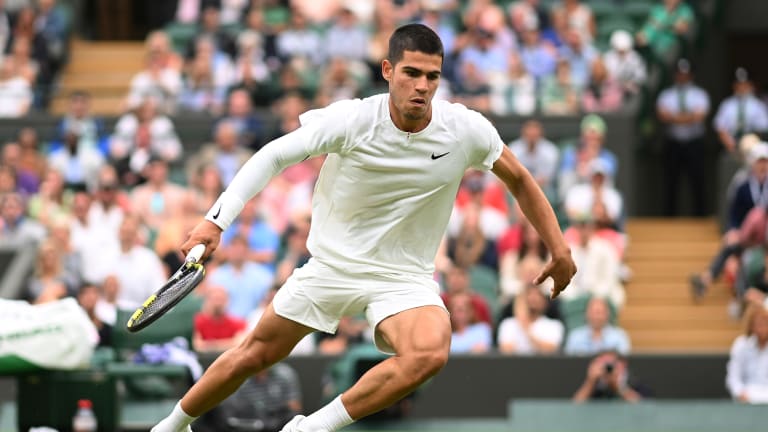Instruction
Technique Tuesday: Can the trendy drop shot keep wreaking havoc on grass courts?
By Jun 28, 2022Instruction
Court of Appeals: Water Break
By May 20, 2023Instruction
Toni Nadal: With improved backhand, Casper Ruud "can be No. 1"
By Nov 21, 2022Instruction
Quick Tip: Add a rocking motion to the start of your serve
By Nov 16, 2022Instruction
Tennis Channel Academy: Rectifying Road Rage
By Oct 13, 2022Instruction
Tennis Channel Academy: Is the Lesson Model Broken?
By Oct 12, 2022Instruction
Breaking The Rules: Time to abandon the net touch?
By Oct 11, 2022Instruction
Mission Transition: How to bring your game from baseline to net (Part 3 of 3)
By Oct 03, 2022Instruction
Mission Transition: How to bring your game from baseline to net (Part 2 of 3)
By Oct 03, 2022Instruction
What can be applied from Carlos Alcaraz, Casper Ruud to your game? How to enjoy the competitive process
By Sep 12, 2022Instruction
Technique Tuesday: Can the trendy drop shot keep wreaking havoc on grass courts?
The dropper was “back in vogue” after Carlos Alcaraz and Ons Jabeur’s clay-season exploits, but with the change of surface came a tactical shift.
Published Jun 28, 2022
Advertising
Advertising

Jabeur struck 11 drop shots in her first round match at Roland Garros, and five at Wimbledon.
© Getty Images

In part because his opponent Struff came to the net 114 times, Alcaraz hit only four drop shots in his opening match at Wimbledon.
© Getty Images